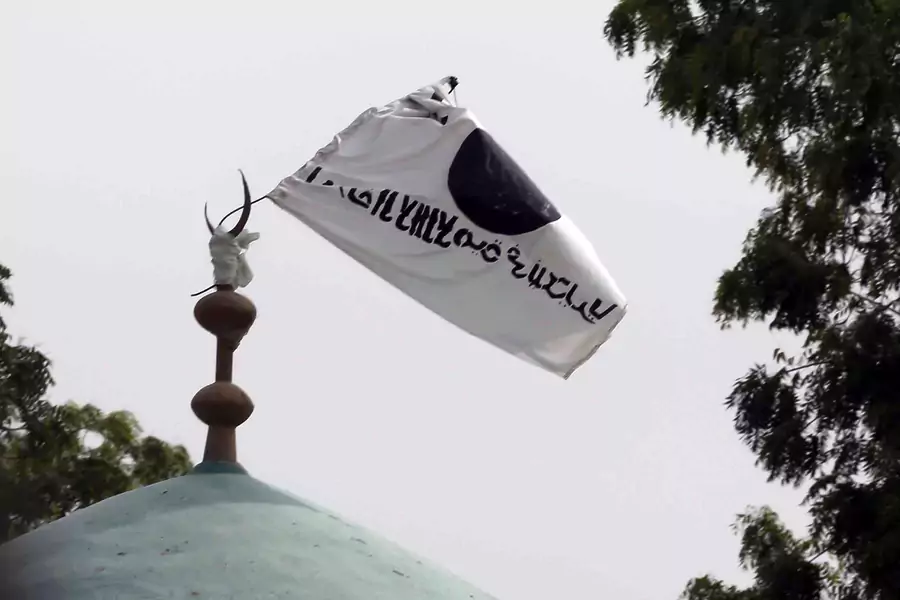Boko Haram Faction Releases Book on History and Ideology

Jacob Zenn is an adjunct assistant professor at Georgetown University’s Security Studies Program and a fellow on African and Eurasian affairs at the Jamestown Foundation.
In June, the Islamic State in West Africa Province (ISWAP) released a 124-page book in Arabic written by “two sons” of the late Boko Haram leader Mohammed Yusuf. Thanks to scholar Aymenn J. al-Tamimi, the book is now translated fully into English and available on his academic blog. The book likely represents the public views of one of Yusuf’s sons and the current ISWAP leader, Abu Musab al-Barnawi, who became very close to Abubakar Shekau after the former’s father was killed in 2009. Abu Musab may have written the book alongside his younger brother, who also commands an ISWAP brigade. Much of the book focuses on why ISWAP—like the Ansaru faction did in 2012—rejects Shekau’s excessive application of takfir (excommunication) to justify killing civilians, Muslims, and even his own commanders.
More on:
This source reveals much about the internal workings of ISWAP and Boko Haram and its ideological evolution. Here are a few important highlights, but I encourage you to read the translation in full.
First, the book provides interesting perspective on hitherto obscure episodes in Boko Haram’s early years. According to the book, Muhammed Yusuf’s father (the authors’ grandfather) was a Sufi Qur’anic teacher in Yobe State who opposed the “Western colonialists” and moved to Maiduguri under pressure from the “apostate dogs” to enroll Yusuf in school. The book explains why Yusuf opposed “boko,” or Western education, on theological grounds and because it makes Muslims “imitate [Westerners] in conduct and dealings.” The book also details Yusuf’s education at al-Kanemi Institute in Maiduguri and Shekau’s at Higher Islamic College in Maiduguri (now called MOGCOLIS). The book mentions Yusuf became a follower of Ibrahim al-Zakzaky, who was initially inspired by the Muslim Brotherhood. But when al-Zakzaky announced his Shi’ism in 1994, Yusuf split, joined the Salafi group called Izala, and became a disciple of the prominent cleric, Shaykh Ja’afar Adam Mahmud.
Furthermore, while one of the two authors acknowledges he was only an adolescent boy when he observed Shekau in the 2000s, the book presents anecdotes about Shekau’s humble beginning and details how his subsequent totalitarian leadership style led to the group’s factionalization “bit-by-bit” after Muhammed Yusuf’s death in 2009. The authors mention piety as one of Shekau’s “praiseworthy qualities”, which is why their father (mistakenly, according to them) chose Shekau to be his deputy. The book also discusses the group’s preparation for the 2009 battle that led to Yusuf’s death and why that “bloody incident” proved to be a victory for the group.
The book also explains how Yusuf split from Izala in 2002. It confirms that Yusuf rejected organic links to al-Qaeda and the Nigerian Taliban of 2002–2004. After 2004, however, Yusuf accepted Nigerian members of al-Qaeda in the Islamic Maghreb (AQIM), such as Ansaru founder Khalid al-Barnawi, to be on his shura (council). According to the book, this shura oversaw the group’s “committees” during Yusuf’s lifetime, including preaching, financing, security, charity, and agriculture, among others. The book also attributes the assassination of Shaykh Ja’afar Adam Mahmud in 2007 to the followers of Muhammed Ali, who led the Nigerian Taliban, and not to Yusuf’s followers. Muhammed Ali had studied in Sudan, where he reportedly met Osama bin Laden, and trained in Afghanistan before 2002.
With this in mind, the early Boko Haram may be described as an accommodation of two factions. One had some organic links to al-Qaeda or international jihadists (the faction of Muhammed Ali), and the other was a breakaway sect of Izala (the faction of Yusuf). Although the book states Yusuf was not “linked” to the other faction, in Yusuf’s sermons from 2006 he stated that his students had been in the Nigerian Taliban. Yusuf and Muhammed Ali both rejected Izala because in the 1990s some of its clerics advocated for jihad in rhetoric but, as the book notes, they ended up “allied with the democratic government” of Nigeria by 2002. The book also notes, however, that before Ali’s death in 2004, his followers declared takfir on Yusuf.
More on:
The book also provides important insights into links between Boko Haram and international jihadi groups, specifically al-Qaeda and the Islamic State. For example, it mentions al-Qaeda in the context of guidance, training, and funding that AQIM provided to Boko Haram after Yusuf’s death in 2009. The book says that there were “dozens of assault and martyrdom operations against the churches of the Christians,” apparently implying they were a consequence of AQIM assistance. The most devastating of these suicide attacks were in Nigeria’s Middle Belt, such as on Christmas Day in Niger State in 2011 and on Easter in Kaduna in 2012. The book also notes the Ansaru faction was “influenced by the ideas of al-Qaeda” and that Shekau rejected AQIM’s “message of advice” that opposed his extremism.
With respect to the Islamic State, ISWAP requested theological guidance from Iraq-based jihadists in the Islamic State’s commission on al-Buhuth wa al-Dirasat (Research and Studies). The book explains how Shekau did not follow the commission’s guidance and even prevented ISWAP members, including the two authors themselves, from traveling to Libya for fear they would report negatively to the Islamic State about him. Indeed, the book confirms Shekau “gave the allegiance pledge reluctantly” to Abubakar al-Baghdadi in 2015, and not “until the leaders gathered round to make him pledge allegiance.” It is not surprising the book mentions that Ansaru members reintegrated into ISWAP and helped militarily defeat Shekau-loyal fighters in 2016, especially former Ansaru commander of suicide bombings, Abu Fatima, who was eulogized in an ISWAP video in July 2018. Years earlier, Shekau had killed off Ansaru’s leaders.
 Online Store
Online Store